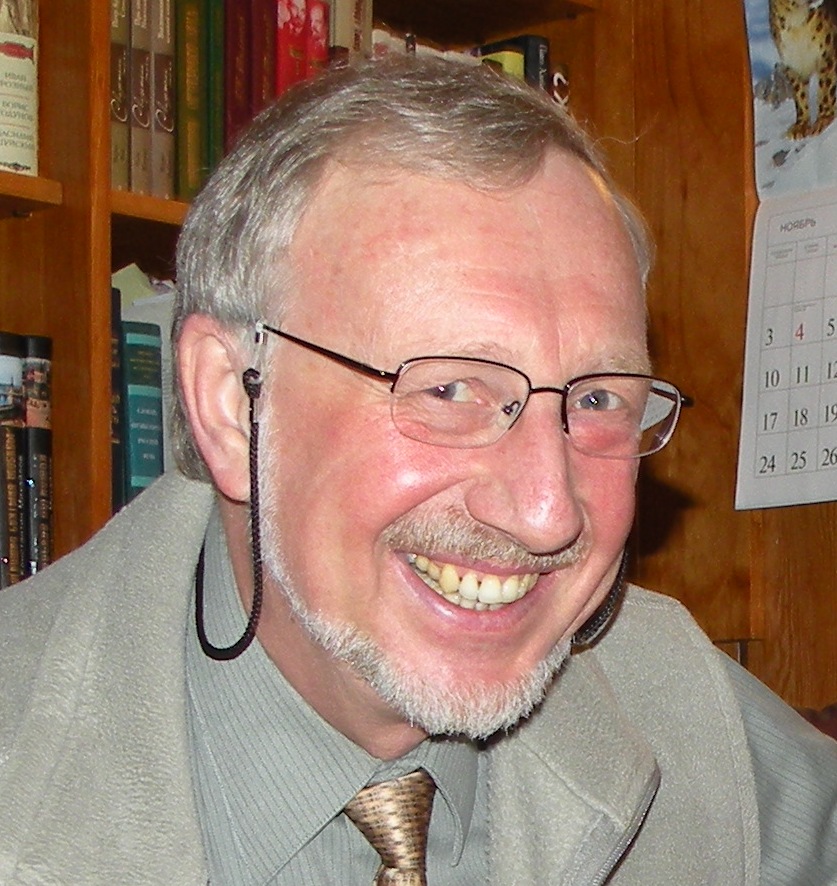X-RAY RUNS: Apply for Beamtime
2017 Nov 1 - Dec 21
2018 Feb 7 - Apr 3
2018 Proposal/BTR deadline: 12/1/17
2018 Apr 11 - Jun 4
2018 Proposal/BTR deadline: 2/1/18

[Note: this short tribute combines words from the Kazimirov family and recent scientific colleagues at CHESS]
It is with great sadness that we report the loss of CHESS staff scientist Dr. Alexander Kazimirov. Alex will be remembered as dedicated x-ray scientist, an inspiring graduate student mentor, and an innovative and accomplished x-ray optics expert. He was a regular participant in, and helped organize, numerous conference workshops and special sessions, and a tribute similar to the following was written to honor him in the proceedings of the 2011 SPIE conference, to which Alex was planning to be a contributor, which is being held the week of August 22-26.
Kazimirov was born in Glubokiy village in Russia on July 29th, 1952. Alex completed his PhD studies in physics in Moscow and continued his work in Moscow, Stuttgart Germany, Chicago IL, and Ithaca, NY. A rare combination of talent, perseverance and dedication allowed him to make contributions to science and earn him the respect of colleagues around the world. More importantly, Alex was a loving husband, father and friend. He imagined a life for his family and did everything to build that life from the foundations up, taking an uphill route to every goal he reached. To his last minute, he kept on learning and exploring, and building new plans and dreams for his loved ones. On August 12th, 2011 he completed his last ascent of Algonquin Mountain with his beloved dog by his side.
Alex earned his PhD degree in 1989 at the Institute of Crystallography, Russian Academy of Sciences, and stayed on to become senior researcher and head of the group in x-ray optics and synchrotron radiation until 1994. He then worked in the laboratory of Prof. Manuel Cardona in Stuttgart, Germany until 1998, when he decided to cross the ocean to assume a joint position at the Argonne National Laboratory and Northwestern University in Chicago, IL. In 2000 he moved his family to Ithaca, NY where he accepted a position as a staff scientist and senior research associate at CHESS, ultimately filling pivotal roles as head of the x-ray optics group and beamline scientist.
Kazimirov worked with renowned scientists across the world on frontier topics in x-ray optics and technique development. Early in his career he strengthened the foundation the x-ray standing wave technique with a high-profile publication in 1998 with colleagues J. Zegenhagen and M. Cardone on the relationship of isotopic mass and lattice constant (Science 282, 930 (1998)). He worked closely with colleague V.G. Kohn to understand the subtleties of x-ray beam focusing with simulations and experiments (Phys. Rev. B, 75 (2007)). Alex was proud of how that work led, with collaborators A. Snigirev and I. Snigireva, to a series of careful and illuminating measurements at the ESRF on the spatial structure of focused x-ray beams diffracted from crystals (Journal of Sync. Rad. 16 (2009)).
As a staff scientist and beamline leader at CHESS, Alex contributed to an impressive array of scientific and technical projects. Motivated by the scientific program of long-time friend A. Sirenko (NJIT), Alex coordinated efforts with D. Bilderback and the x-ray optics group to develop focusing glass capillaries and miniaturized channel-cut crystals to record microbeam high-resolution diffraction and x-ray standing wave data from novel semiconductor structures (J. Phys. D: Appl. Phys., Rapid Comm., 37 (2004)). Alex was famous for innovative synthetic multilayer (ML) optics development and, with his guidance, half of the experimental stations at CHESS were retrofit with custom ML optics to extend their experimental capabilities. In one instance, Alex worked closely with Y. Platonov and V.V. Martynov at the Osmic Inc. (now Rigaku) to characterize newly deposited ML substrates that were sent via overnight courier; after measurements by Alex, the recipe for the desired ML was revised and a new set of optics produced and sent overnight. Alex repeated the produce-ship-analyze-produce cycle many times until the final result was a special set of narrow- and wide-bandwidth optics needed for innovative protein crystallography data collection (J. of Sync. Rad. 12 (2005)).
One of the roles Alex enjoyed most at Cornell was mentoring graduate students. He was famous for his no-nonsense approach to carefully outlining the x-ray techniques and equipment students would need to accomplish their work. He was generous with his time. An example of his dedication is provided by Prof. M. Miller (Cornell), who recalls that all of the x-ray characterization research papers produced by his group of graduate students in the Mechanical and Aerospace Engineering department have Kazimirov as a coauthor. These students, as well as his coworkers at Cornell and around the world, have lost a talented and dedicated teacher and friend.
Submitted by: Ernie Fontes, CHESS, Cornell University
